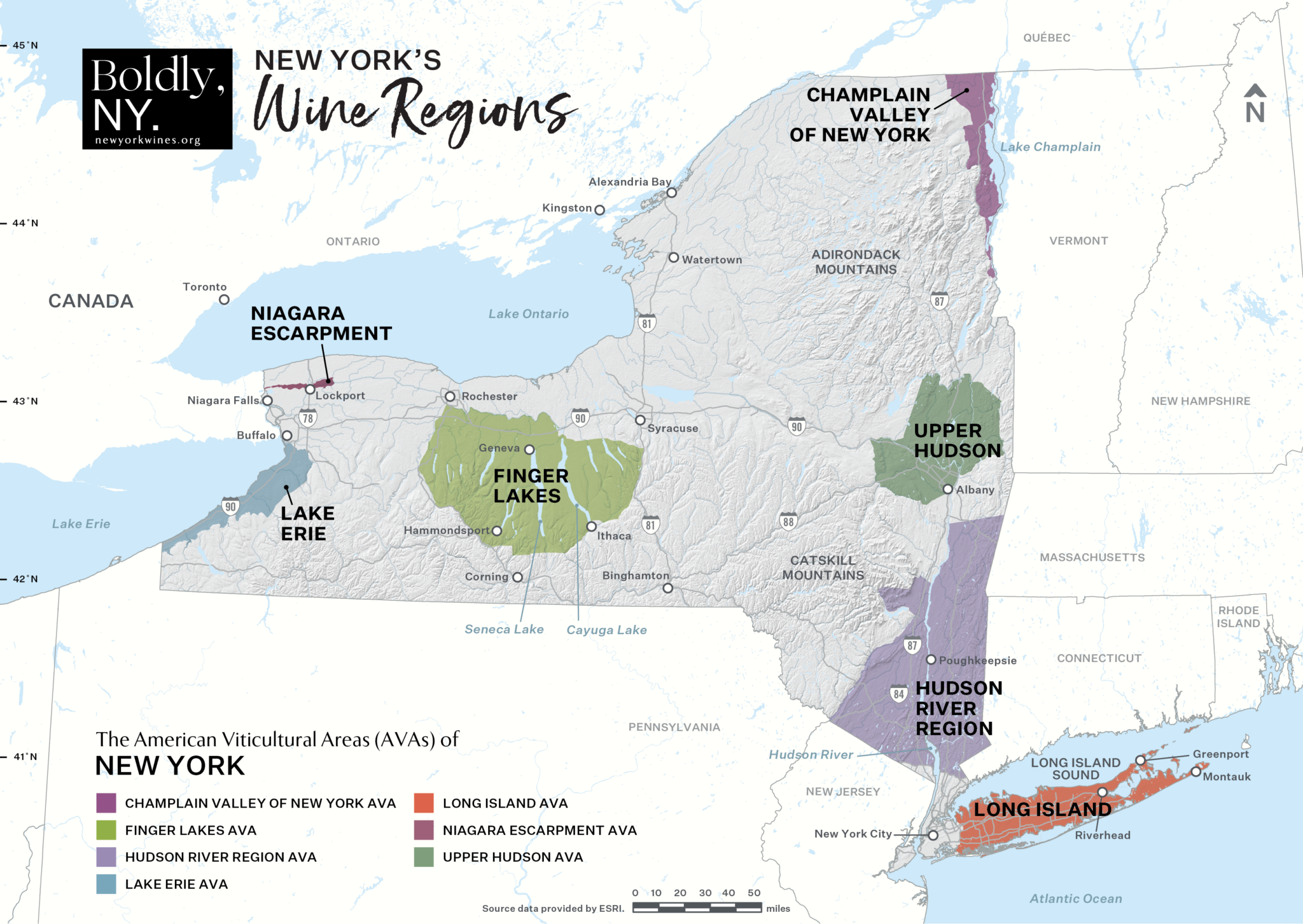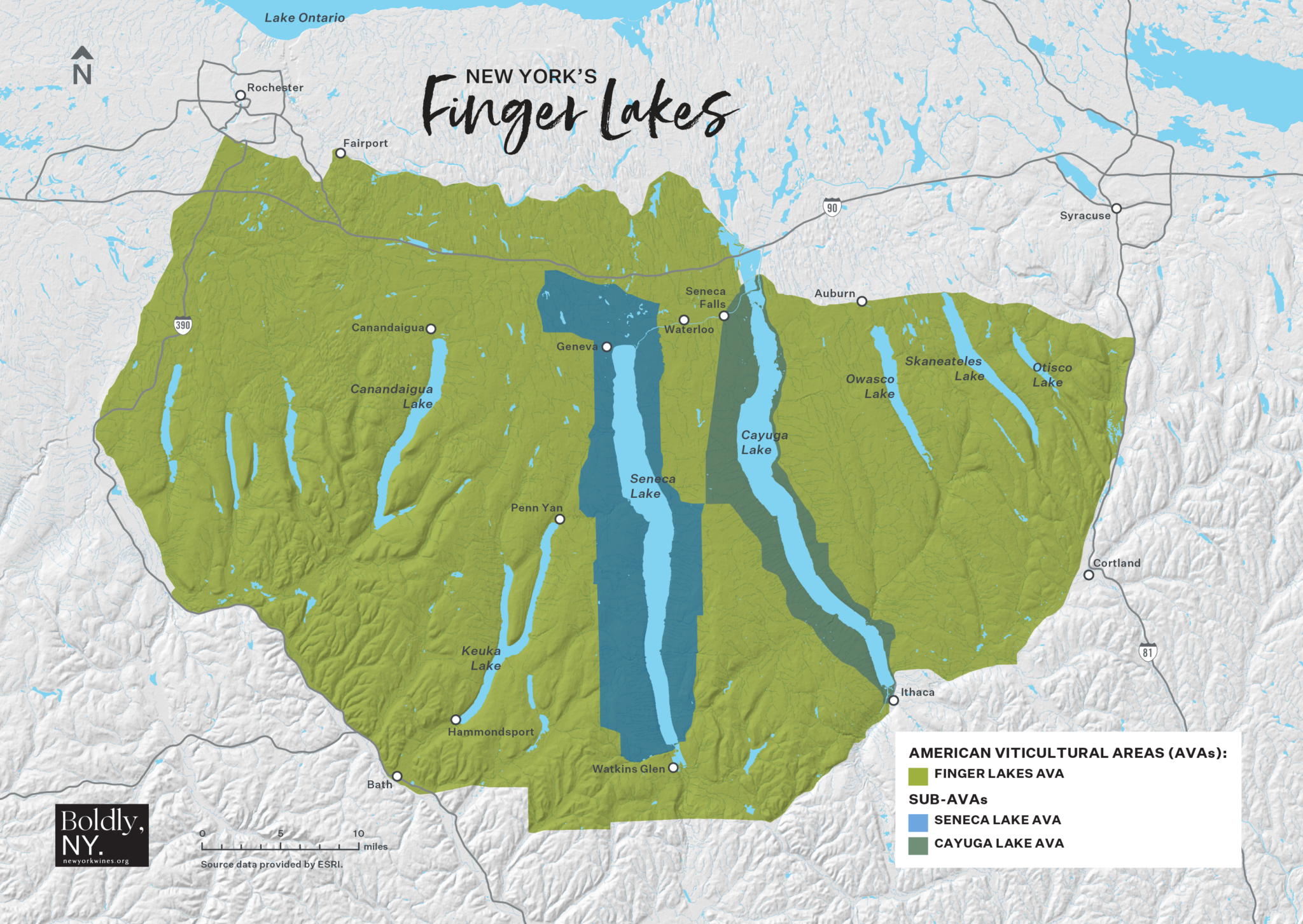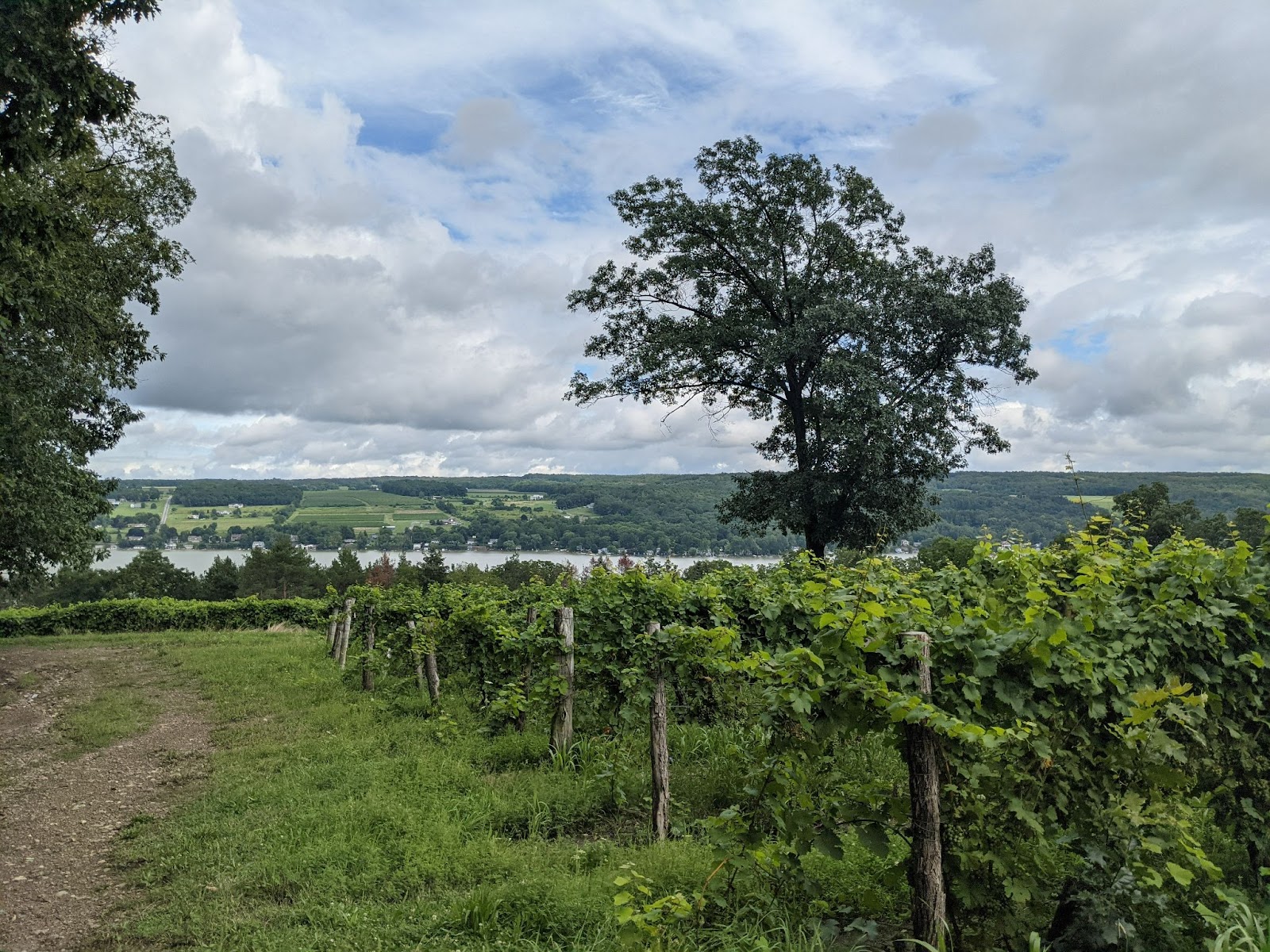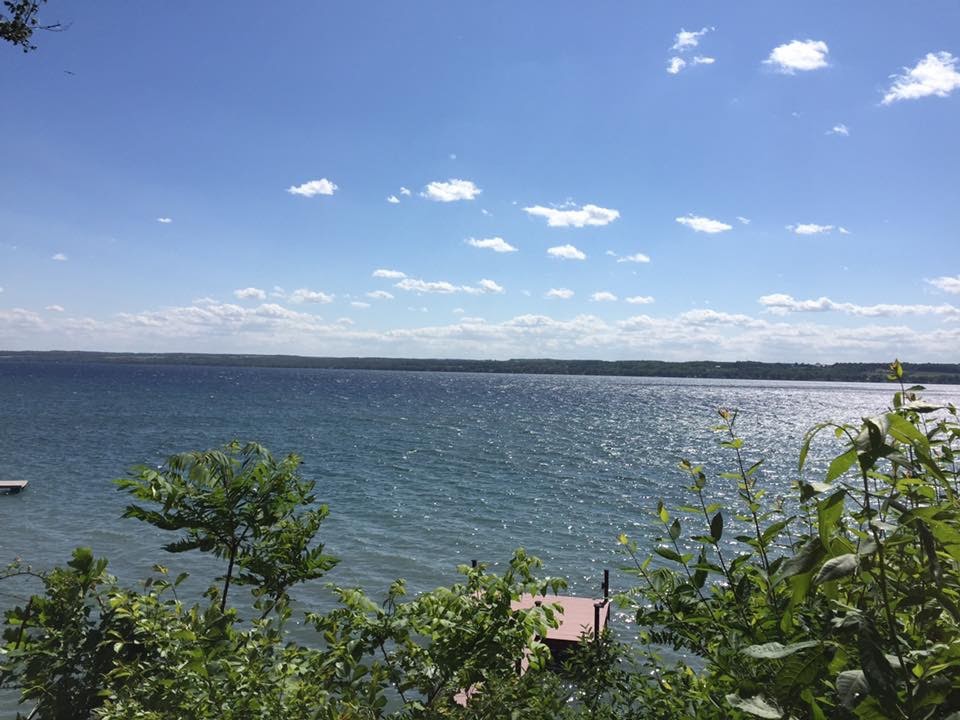Finger Lakes AVA and three Rieslings to try
Once upon a time, when I was studying for the Masters of Wine exams, in blind tastings, Riesling came from Mosel, Pfalz, Rhinehessen, Alsace, Clare Valley (Australia) and maybe Austria. Today, the world of Riesling is a little more complicated. Not only do I taste Rieslings from many more regions - this year alone my tasting notes list Rieslings from Romania, Slovakia, the Langhe and Western Australia, but also from the Finger Lakes in North America.
The Finger Lakes region is a central part of the Iroquois homeland. The Iroquois tribes include the Seneca and Cayuga nations, for which the two largest Finger Lakes are named. The Tuscarora tribe lived in the Finger Lakes region as well, from ca. 1720. The Onondaga and Oneida tribes lived at the eastern edge of the region, closer to their namesake lakes, Oneida Lake and Onondaga Lake. The easternmost Iroquois tribe was the Mohawk. James Fenimore Cooper’s “The Last of the Mohicans”, set around Lake George to the north east of the Finger Lakes, was written in 1826, and describes heavily wooded lake shorelines, and morning mists rising from the water.
“Along both ranges of hills, which bounded the opposite sides of the lake and valley, clouds of vapour were rising in spiral wreaths from the uninhabited woods, looking like the smoke of hidden cottages, or rolled lazily down the declivities, to mingle with the fogs of the lower land.”
The book describes the mid 18th century conflict between the French and British, reminding us that geographically, the region is closer to Toronto than New York. The book also marks the expansion and colonisation of Indian territory from the 1820s.
The first record of wine making in the Finger Lakes is in 1829, when William Warner Bostwick, an Episcopal minister in Hammondsport, planted Vitis labrusca shoots in his rectory garden. Commercial viticulture officially began in 1862, when the Hammondsport and Pleasant Valley Wine Companies were founded. Two more companies were formed three years later. The region became famous for its sparkling wines, with the Pleasant Valley Wine Company winning European awards in 1867 and 1873. These successes spurred growth in commercial plantings in the area, and by the end of the century there were 10,117 ha planted. The name Finger Lakes does not appear to have been fixed until the 1880s.
A number of factors, including phylloxera, competition from California, and prohibition, combined to cause a decline in commercial viticulture production in the early 20th century. Production resumed on a smaller scale after Prohibition was repealed. After World War II, soldiers returning from Europe had developed a taste for drier wines from Vitis vinifera varieties, as opposed to the sweeter wines produced from native American grape varieties. Unlike in California, winemakers in the Finger Lakes struggled to grow Vitis vinifera in the harsh winters. They experimented with French-American hybrid varieties with limited success.
A major change in Finger Lakes viticulture occurred when Dr. Konstantin Frank, a Ukrainian immigrant with a PhD in Plant Science, came to work for the Cornell University Geneva Experiment station in 1951. Commercial growers and researchers at the Geneva Experiment Station were convinced that European Vitis vinifera varieties could not grow in the cold Finger Lakes climate. After years of planting Vitis vinifera in the colder climate of the Ukraine, Dr. Frank was sure that it could be grown in the Finger Lakes if grafted onto the proper, cold-hardy native rootstock. He proved this in 1962 when he started Vinifera Wine Cellars, in Hammondsport. Dr. Frank successfully grew and produced wine from Vitis vinifera grapes such as Riesling, Chardonnay, Pinot Noir, Gewürztraminer and Cabernet Sauvignon, grafted onto native rootstock. Plantings of Vitis vinifera varieties spread throughout the region, reinvigorating the Finger Lakes wine region's growth and popularity.

The eponymous lakes are particularly important. Their depth serves to moderate the climate acting as a storage heater during the winter, protecting lakeside vineyards from freezing and moderating summer heat. With a Continental climate, proximity to a lake can dramatically alter the meso climate. The same concept applies to our last article on island viticulture.

The eleven glacial finger lakes originated as a series of northward-flowing streams towards Lake Ontario. Around two million years ago, the first of many continental glaciers of the Laurentide Ice Sheet moved southward from the Hudson Bay area, initiating the Pleistocene glaciation. These scouring glaciers widened, deepened, and accentuated the existing river valleys. Glacial debris, possibly terminal moraine left behind by the receding ice, acted as dams, allowing lakes to form. Despite the deep erosion of the valleys, the surrounding uplands show little evidence of glaciation, suggesting the ice was thin, or at least unable to cause much erosion at these higher altitudes.
Much of the Finger Lakes area lies upon Marcellus Shale and the Utica Shale, two prominent natural gas reserves. With fracking technology available, a number of landowners allowed extraction of the natural gas on their land but in 2014, the government of New York banned all fracking in the state, citing pollution risks.
The mosaic of different soils adds variety to the styles of wine. The depth of the shale to the bedrock is very varied. Southern shores are very steep, while northern shores are very gentle slopes. Forests of silver birch intermingle with vineyards and position in relation to the lake alters the temperatures - with more moderate temperatures nearer the water. The region is compared to Germany with its steep vineyards and reflected heat from the water.

Riesling makes up over half of the production. It loves cooler climates can survive winters down to -25C, especially when protected by heavy snowfalls. The warm growing season and long, slow, cool autumn giving a long hang time with limited sugar surge, helps the vines to adjust to the harder winter. The climate is changing. Even twenty to thirty years ago, grapes struggled to ripen sufficiently and today ripening can still be erratic. However, the biggest problem remains survival during the harsh winters.
Riesling is regarded as a transparent variety, reflecting the very specific terroirs where it is grown. According to the Finger Lakes winemakers, their Riesling is very different to Canadian Riesling, even though to the outside observer they look to be geographically close. Ontario - International Riesling Foundation (drinkriesling.com)
As of 2008, there are nearly one hundred wineries in operation in the Finger Lakes AVA. The viticultural area centers around the four main lakes: Canandaigua, Keuka, Seneca, and Cayuga, with the latter two having their own AVA status and includes two of America's oldest wineries, O-Neh-Da Vineyard (1872) on Hemlock Lake and The Pleasant Valley Wine Company (1860) on Keuka Lake. In 2017 this map shows where they are clustered.

https://www.fingerlakeswinealliance.com/
In the Finger Lakes the winemakers have not just their own stylistic choices of sparkling, dry and off-dry, making a virtue of the variety’s acidity but also the influence of the vintages.
Trestle Thirty One, Seneca Lake AVA
Trestle Thirty One was founded by Nova Cadamatre MW and her husband Brian Cadamatre, with 2015 being their inaugural vintage.



Lake Seneca showing the inversion fog that forms in the fall while the water is warm but the air around it is getting colder.
2019 is the current vintage. According to Nova, this was a classic vintage, neither too hot or too wet, with more fruit expression. The grapes were destemmed and crushed and left for two hours in the press to extract texture. The must is protected from oxidation as much as possible, but not excessively so. Following four to five days of cold stabulation, the wine was left for eight to ten months on the lees with no battonage and then a year ageing in bottle before release.
Trestle Thirty One Seneca Lake AVA Riesling 2019
Hermann J Weimer, Seneca Lake AVA
Founded in 1979 by Hermann Wiemer, who came from Bernkastel in Germany. Hermann discovered that the cool climate and gravelly soils of the Finger Lakes were similar to his family’s vineyards in the Mosel Valley. At a time when very few thought it was possible to grow vinifera varietals on Seneca Lake, Hermann believed that the unique soil types and moderating weather effects of the Finger Lakes would make it possible to produce great wines here. In 2007, Hermann officially retired, handing over the winery to Fred Merwarth, who partnered with Swedish agronomist Oskar Bynke, to carry on Hermann’s legacy. Over the last decade, they have embraced and expanded Hermann’s detail-oriented approach to viticulture and winemaking, extensively working on understanding the relationship between the vines and soils of the Finger Lakes. The vineyards have been organic for a number of years and since 2015 have been slowly moving to biodynamic, initially 5ha and now 30ha,and using indigenous yeast.
The HJW is a cool site on shale, less protected from the lake resulting in lower ripening levels, and makes one of the leaner wines in the portfolio. The grapes are harvested manually over a long period to achieve maximum ripeness. Fermentation in tanks is usual, but here introduced some used 500l oak to try and soften the acidity. The fermentation is slow over eight to ten months. The 2019 vintage was long and cool with a long dry autumn which allowed them to do the long extended harvest.
HJW Riesling 2019
Red Newt Cellars, Seneca Lake AVA
Red Newt Cellars is located less than a mile from the west shore, facing east south east, this estate, owned by Harlan and Kenny Fulkerson, has 40% planted with vitis vinifera. The winemaker is Kelby Russell.

The Knoll is a 1ha hill in the middle of the Lahoma vineyard and has a different soil profile with sand on sandstone called Lancing and Dunkirk soils, which gives the wines more opulence. Wine has been made from this single parcel since 2013. Planted in 2008, the site has excellent drainage and sun exposure. The Riesling is clone 239 on 3309 rootstock.
The 2016 was a dry and hot vintage and the grapes were harvested at 6-7C in October. The grapes were crushed and given a three days cold soak on the skins. The grapes were pressed and underwent a long seven month spontaneous ferment and then left until the following September on the lees. This is the current release and is one of most premium in range.
The Knoll 2016
In conclusion, very impressed with these three Finger Lake Rieslings. While they may not have the delicacy of a Mosel, the wines all showed great skill in balancing the naturally high acidity with texture and weight to make extremely fine wines. Can't wait to go over there one day and see the lakes in person!

Rieslings from this region came in a set of mini bottles to accombay a zoom tasting New York State of Wine: Riesling Battle Royal - YouTube with Jamie Goode and Caroline Furstoss from Alsace as well as three winemakers from the Finger Lakes region: Nova Cadamatre, Oskar Bynke and Kelby Russell.